What’s one of the greatest motivators for humans?
Fear.
It’s hardwired into our DNA.
People don’t want to miss out on a good deal … or business opportunity … or social event.
This causes them to feel urgency and take action sooner.
Fear of missing out, also called FOMO, needs to be in your tool belt as a marketer for this reason.
Using it strategically will help lift conversions, increase engagement, and drive other KPIs through the roof.
These are nine FOMO statistics every marketer that will help bridge the gap.
Alternatively, watch the video I covered on this topic. 👇
1. 56% of social media users suffer from FOMO (Source)
Think about social media for a second.
What is it normally used for?
…To display social status, wealth, and interesting things we’re doing.
While it seems innocent, it creates an ecosystem in which everyone is trying to show off and one-up each other.
This is at the heart of FOMO.
John posts a picture of him on the beach in the Bahamas. 🌴
His high school friend Tim feels left out and thinks that everyone is up to cool stuff but him.
When really, behind the scenes, most people are only posting the good parts of their lives on social networks and leaving out the rest.
It makes sense.
Why would you post about your debt, car breaking down, or sick hamster? 😂
It’s a natural evolution of social networks.
However, 56% of social media users experience FOMO because of this.
As a marketer, you can leverage this behavior for higher click-through rates, engagement, and conversions.
Check out this Facebook post by Mailchimp to see what I mean:
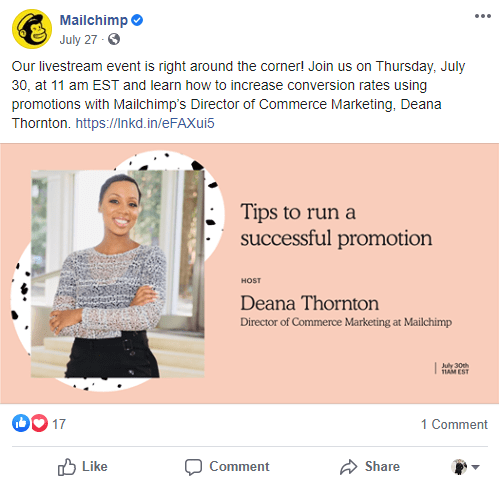
“Our live stream event is right around the corner!” reminds users that they have to tune in quickly or they’ll miss Mailchimp’s live webinar.
Telling viewers they will “learn how to increase conversion rates using promotions” gives them a direct benefit of attending and a reason why they shouldn’t let this opportunity slip.
2. 69% of millennials experience FOMO (Source)
Who experiences FOMO the most?
Is it Gen X?
Is it Baby Boomers?
Nope. It’s millennials like myself. In fact, 69% of millennials experience fear of missing out.
We’re on social media all day: Instagram, Facebook, Twitter; you name it.
We see what our friends are doing like travelling, eating food, going out, and living life. It can make us wonder, “Am I doing enough?”
If your business targets the 18-29 year old crowd, you can leverage FOMO in marketing campaigns more aggressively.
This Etsy shop created a sense of FOMO by doing a giftcard giveaway on Instagram that expired on a specific day and hour:
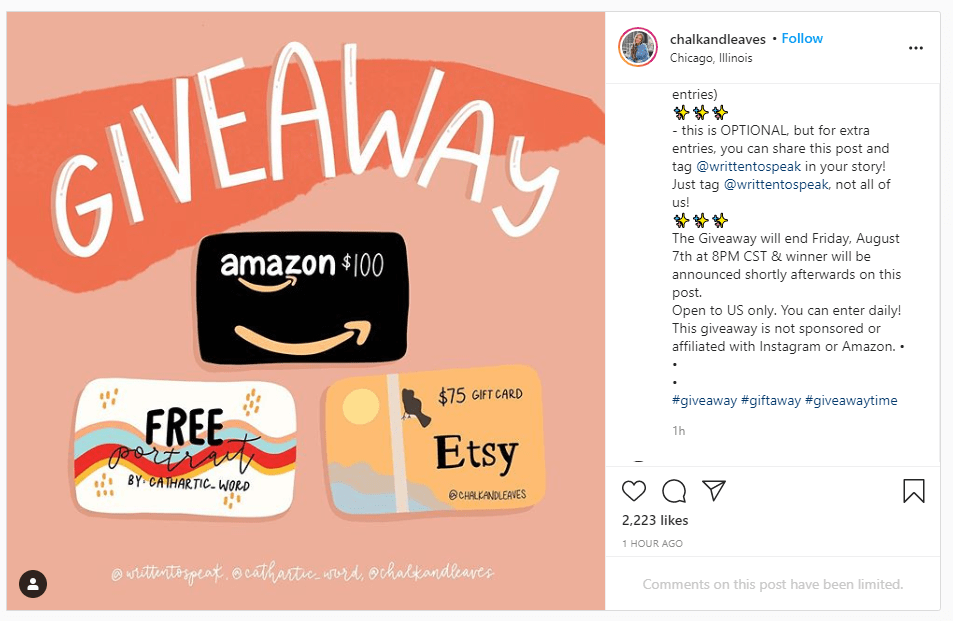
3. Millennials are the most likely to purposely try to create FOMO among their peers (Source)
Fear of missing out isn’t done by accident. Some times it’s done purposely.
Millennials are the most likely to purposely create FOMO among their peers by posting glamorous and exciting content on social media.
I’m talking about travelling, food, parties, etc. It makes their lives look fascinating and gets other people interested in what they’re doing.
As a marketer, I highly recommend that you take advantage of user-generated content.
It’s win-win.
You get free brand awareness and the customer gets exposure.
There’s no brand that has taken advantage of UGC and influencer marketing more than Fashion Nova.
They send influencers free clothing with the exception they tag and mention the brand.
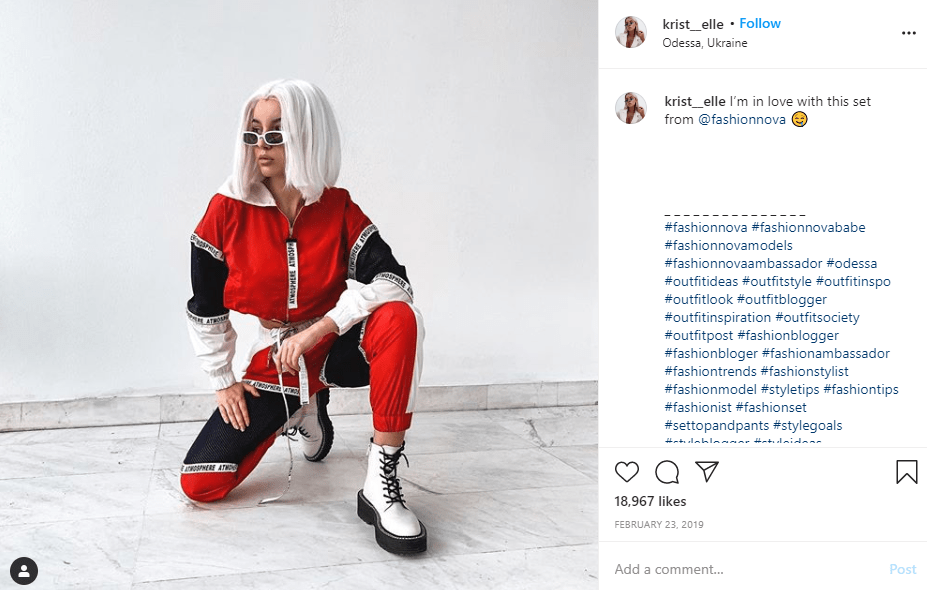
Consider what this does for the influencer’s followers…
They see posts like this and might think, “How do I get free clothes?”, “How did they get sponsored?” or “How can I do that?”
A.K.A it creates a FOMO effect.
4. Those with household incomes above $75,000 experience FOMO less (Source)
Do income and demographics affect FOMO? Yes.
Data has found that household incomes above $75,000 per year were less likely to experience FOMO but more likely to share their lifestyle on social media to create sensationalism.
If you are targeting high-income earners, apply what I mentioned previously about influencer marketing and UGC.
These individuals are more likely to share user generated content and influencer-style posts to their peers.
5. 39% of FOMO sufferers reported feeling envious, 30% jealous, and 21% said they felt sad or disappointed (Source)
Fear is a broad word. Let’s break it down a bit.
When people feel FOMO, What are they feeling exactly? According to research, it’s:
- Envy
- Jealousy
- Sadness or disappointment
A small amount of people (21%) experience happiness. So, it isn’t all bad. It’s perspective.
Marketers can target the positive emotions associated with FOMO by offering inspirational content.
Show case studies of successful businesses that grew faster than ever thanks to your services.
Show before and after photos of people who followed your meal plans.
Explain the story of how you grew your brand and overcame obstacles. 💪
You get my point.
6. 60% of millennial consumers said they make a reactive purchase after experiencing FOMO (Source)
Here’s where FOMO turns into transactions for your business.
60% of Millenials will make an impulse purchase within 24 hours of feeling FOMO.
It’s that powerful.
So, can you drive more sales knowing this?
Many ways. Here are a few tactics to deploy:
Use countdown timers and low inventory warnings
Countdown timers are clocks displayed on web pages, popups, and email newsletters that show how long users have to purchase a product or take advantage of a deal.
This is one of the easiest and most effective ways to push people to make a purchase with FOMO.
Here is a direct mail letter from Better Homes and Gardens that says “Last Chance,” “Don’t forget your FREE gift!” on the front:
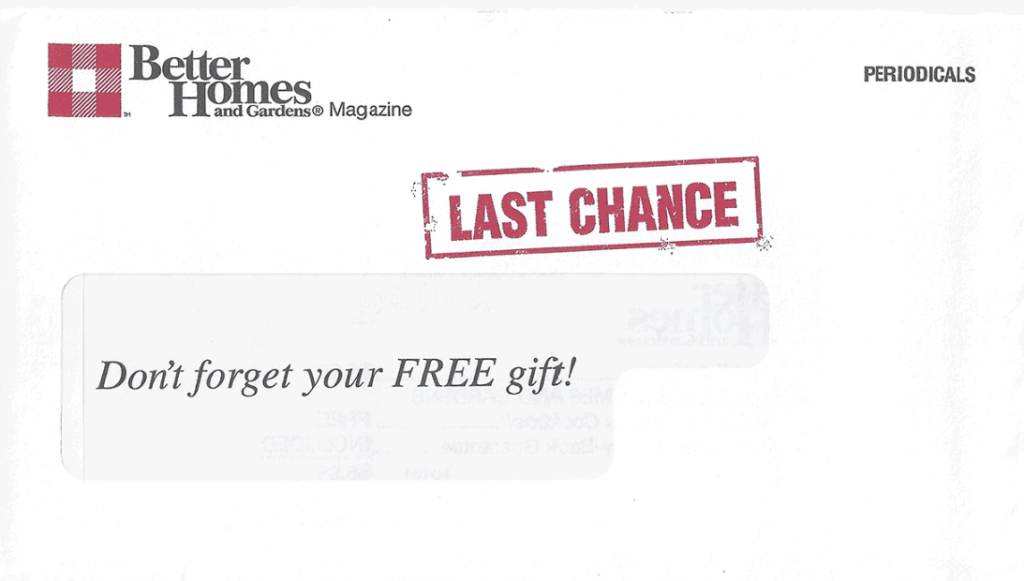
The inside content explains to the reader that they one last chance to lock in a lower rate for their magazine subscription.
For digital campaigns, however, I recommend using a tool like OptinMonster which has one of the industry’s best exit-intent features for email marketing.
You can add countdown timers directly to any popup, newsletter, etc.
Similarly, low inventory warnings also push people to take action because there’s a chance that other customers will purchase a product and there will be no stock.
That brings me to the next tactic.
Write urgent sales copy
No matter what strategy you use for leveraging FOMO, your sales copy needs to be in tip-top shape.
Otherwise, you won’t generate many sales.
The first thing to keep in mind is to use urgent power words. These are words and phrases that are urgent in nature, such as:
- Today
- Limited
- Now
- Only
- Last
- Low
- Out
- Hurry
- Quick
- Deadline
- Fast
- Final
Then, remind the customer what they are missing out on and why it’s such a big deal.
This could be a sale, promotion, low-inventory product, or event.
State the benefit such as cost savings, how the product will improve the customer’s life, etc.
Finally, end it with a clear call to action that instructs the user what to do. This might be to click a link, visit a website, call a phone number, or otherwise.
Combining all of these steps will help you create a message that people can’t wait to engage with in fear they will miss out.
7. 40% of millennials overspend or go into debt to keep up with their friends (Source)
Here’s a crazy one…
40% of millennials will literally get into financial trouble just to keep up with friends.
Seems insane, right?
Nearly half the people my age are playing a game of keeping up with the Jones’s.
Businesses targeting millennials can add an element of showing what other people are achieving or have within marketing campaigns knowing this.
Look at this testimonial placed with an advertorial for an e-commerce course:
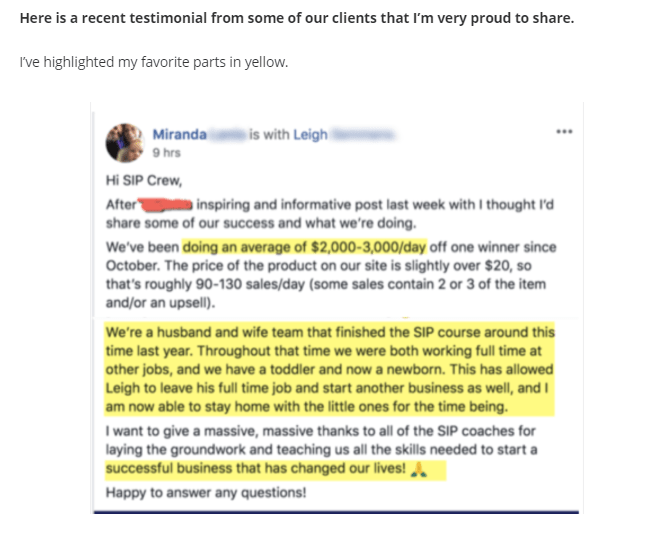
Seeing someone make up to $2,000–3,000/day would make anyone interested in earning money online scurrying to find out more.
8. 56% of people are afraid of missing out on events, news and important status updates if they are away from social networks (Source)
Social media isn’t just for glamour and seeing what friends are up to.
It’s also used for promoting events, content, and important information—exactly what 56% of people afraid of missing out on.
So, how do you get users stuck to your social media pages like Gorilla Glue?
By turning those pages into content hubs.
Continually share content, news, and updates on Facebook, LinkedIn, Twitter, and other networks that your audience frequents.
This will let them see that if they want the latest news from your brand, they have to keep coming back for more.
9. Facebook is the most common FOMO contributor (72%), followed by Instagram (14%), Twitter (11%), and Pinterest (8%) (Source)
Which networks contribute the most to fear of missing out?
According to a recent study, it is Facebook followed by Instagram, Twitter, and Pinterest.
This means that marketers need to use these platforms to reach their audience and engage them emotionally.
If you’re marketing on Facebook, ensure that your page is optimized for keywords and all of the settings are complete. This includes a website URL, call to action button, hours, and additional information.
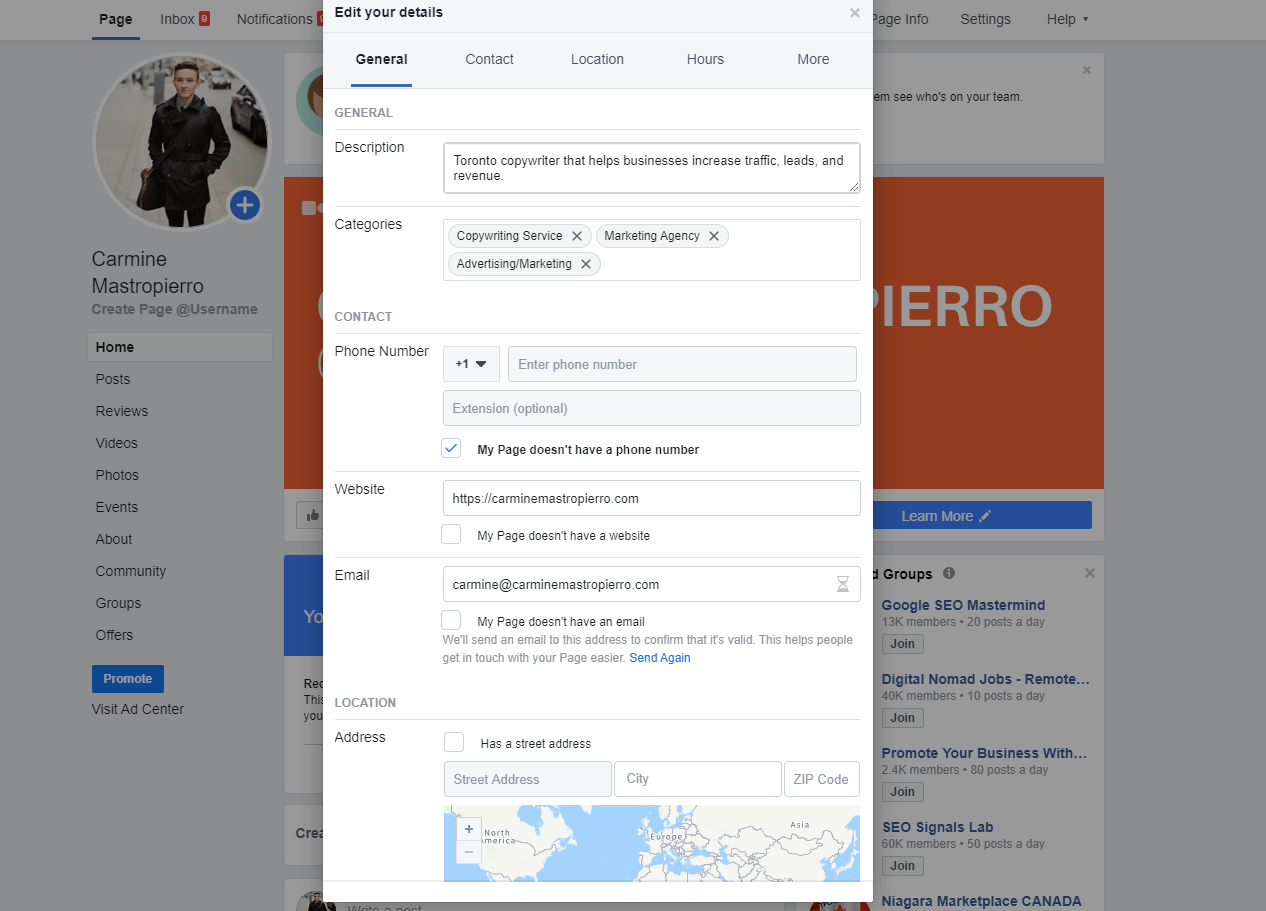
Share content, videos, and post photos of your company’s activities so you’re constantly pinging followers.
Take advantage of Facebook groups too. Join others and engage in them to build brand equity or create your own private community.
Instagram can be used by promoting your latest products so customers are constantly exposed to the awesome things you’re selling (and missing out on!).
Additionally, host user generated content. This is content that customers create and you promote which can make others feel like they are missing out on by not contributing.
Wrapping up these FOMO stats
That’s it folks! Now you understand the power of fear of missing out and how to use it for enhancing marketing performance.
To recap some of my main points, millennials and social media are the biggest sources of FOMO.
If you’re targeting a younger audience, focus on ads and sales copy that uses urgency, scarcity, etc. This will help drive more engagement.
Similarly, use Facebook, Instagram, Twitter, and other networks to keep customers in the loop and coming back for more content.
Use countdown timers and low-inventory warnings to push customers to purchase before its too late. You can mix these into advertisements and email newsletters.
Reach out to me for a free consultation if you need a copywriter to help implement these strategies.
You can also take my free and paid courses to learn more about marketing.














